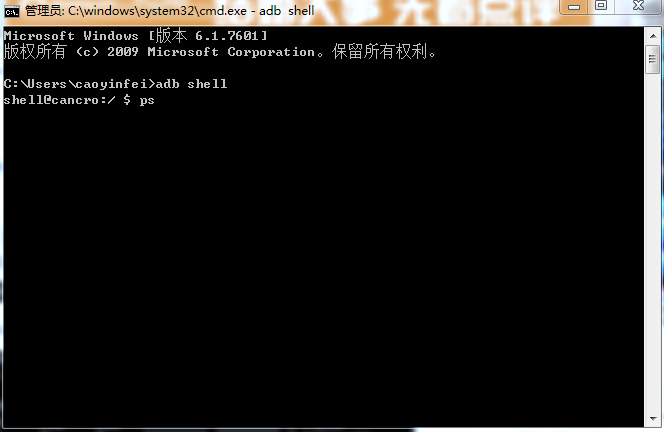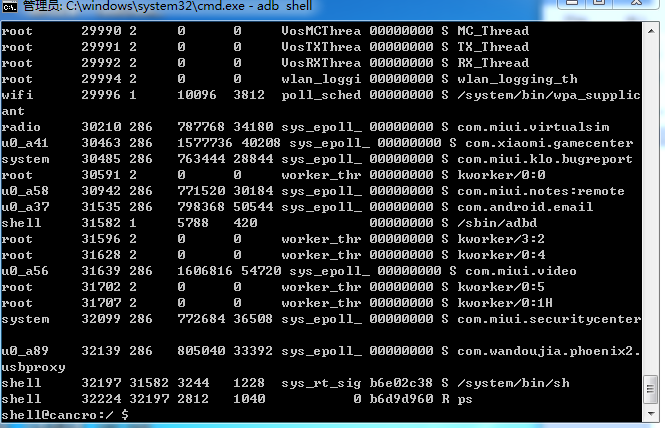android檢視當前手機中的程序
阿新 • • 發佈:2019-01-09
正常情況下,每一個Android應用啟動後都會對應一個程序,當前越來越多應用會有多個程序,為了推送,為了記憶體,或者為了保活。如何檢視應用程序呢。
1.DOS下面cmd,然後開啟adb shell,直接ps命令,顯示當前手機所有程序,如圖所示:

2.利用(ps|grep 條目名稱)命令,過濾自己需要的程序,比如列出條目裡含有tencent字元的程序(包名裡面含有該字元),則輸入ps|grep tencent,如圖所示則,QQ包含的程序下面幾個:
各列引數意義:
USER 程序當前使用者;
PID Process ID,程序ID;
PPID Process Parent ID,程序的父程序ID;
VSIZE Virtual Size,程序的虛擬記憶體大小;
RSS Resident Set Size,實際駐留”在記憶體中”的記憶體大小;
WCHAN 休眠程序在核心中的地址;
PC Program Counter;
NAME 程序名;
3.還有比較重要的兩個是程序的Importance等級以及adj值,關於這兩個定義大家可以不必深究,但是要有一定的理解,這兩個玩意是具體決定了系統在資源吃緊的情況下該殺掉哪些程序。通過cat /proc/程序id/oom_adj可以看到當前程序的adj指,比如輸入cat /proc/32366/oom_adj

cat檢視程序的adj值後我們會得到其返回結果“0”,說明當前程序正位於前臺,因為我的手機qq是開啟的。
同樣,我按home鍵,把qq退到後臺,這個時候,再輸入cat /proc/32366/oom_adj,則如下結果
而adj值則在ProcessList中定義:
final class ProcessList {
// OOM adjustments for processes in various states:
// Adjustment used in certain places where we don't know it yet.
// (Generally this is something that is going to be cached, but we
// don't know the exact value in the cached range to assign yet.)
static 相較於Importance等級而言adj值可以賦予我們更多的參考價值,從上述adj值的定義中我們可以看到,值越小優先順序越高,比如native程序的adj值為-17,對於這個adj值的程序來說,系統根本不會動它一分一毫,實質上當程序的adj值去到2時系統就很少會因為其它原因而去殺死它,這些在研究程序保活中都非常重要。



